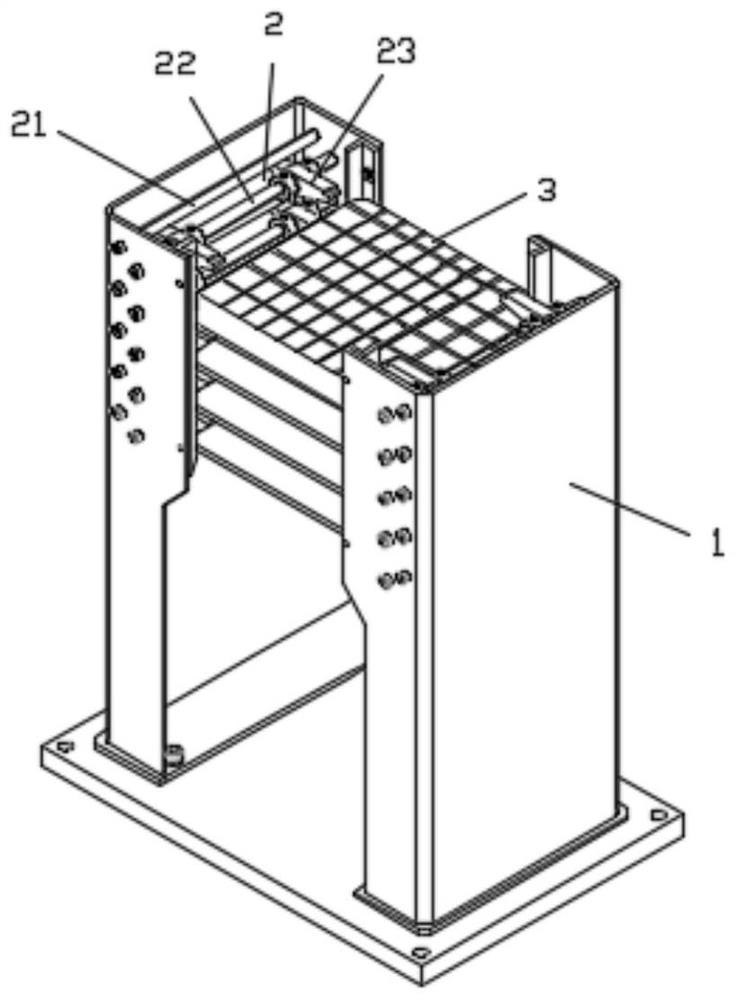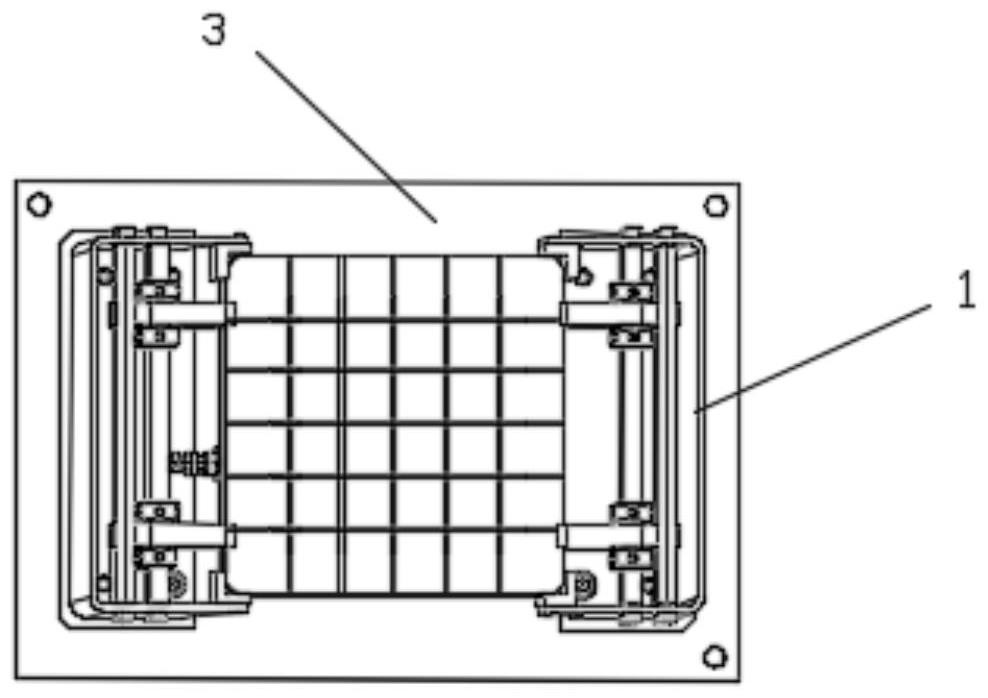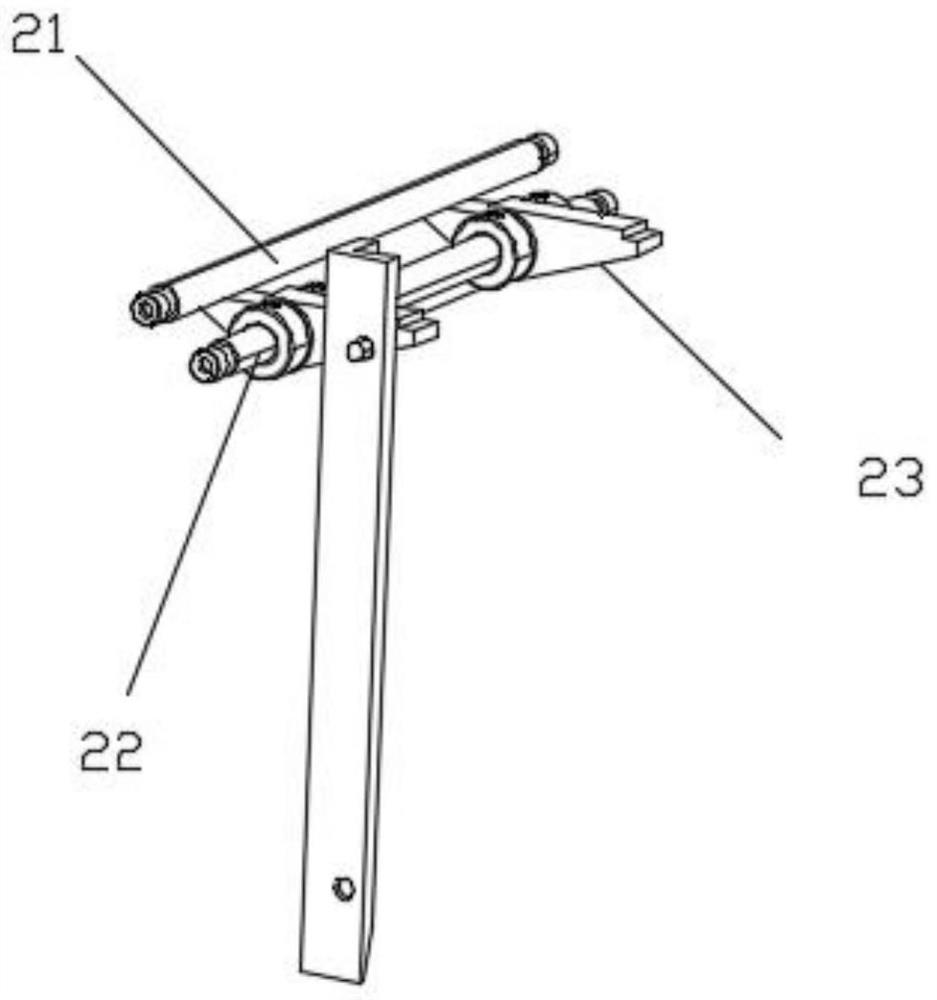Light aviation magazine and composite material for preparing same
A composite material and aviation technology, applied in the field of aviation materials, can solve the problems of low qualification rate, low production efficiency, long manufacturing cycle, etc., and achieve the effect of saving space, easy to take out, and reducing weight
- Summary
- Abstract
- Description
- Claims
- Application Information
AI Technical Summary
Problems solved by technology
Method used
Image
Examples
Embodiment 1
[0033] A composite material for preparing a lightweight aviation magazine, comprising the following raw materials in parts by weight: 55 parts of composite resin, 10 parts of nanometer carbon, 10 parts of polyphenylene sulfide, and 5 parts of aluminum metal fiber.
[0034] The composite material comprises the following steps:
[0035] The composite resin, nano-carbon, polyphenylene sulfide and aluminum metal fiber are uniformly mixed, then heated to 210° C., stirred at a constant speed and extruded to obtain a composite material.
[0036] Described composite resin comprises the following steps to make:
[0037] Step S1. Add 2-aminoterephthalic acid to N,N-dimethylformamide, stir at a constant speed and raise the temperature to 110°C, then add aluminum chloride hexahydrate in two equal amounts, and the time interval between the two additions for 30 minutes, keep warm and stir at a constant speed for 6 hours, then let stand for reaction for 10 hours, cool to room temperature af...
Embodiment 2
[0041] A composite material for preparing a lightweight aviation magazine, comprising the following raw materials in parts by weight: 60 parts of composite resin, 15 parts of nanometer carbon, 20 parts of polyphenylene sulfide, and 6 parts of aluminum metal fiber.
[0042] The composite material comprises the following steps:
[0043] The composite resin, nano-carbon, polyphenylene sulfide and aluminum metal fiber are uniformly mixed, then heated to 210° C., stirred at a constant speed and extruded to obtain a composite material.
[0044] Described composite resin comprises the following steps to make:
[0045] Step S1. Add 2-aminoterephthalic acid to N,N-dimethylformamide, stir at a constant speed and raise the temperature to 110°C, then add aluminum chloride hexahydrate in two equal amounts, and the time interval between the two additions for 30 minutes, keep warm and stir at a constant speed for 6 hours, then let stand for reaction for 10 hours, cool to room temperature af...
Embodiment 3
[0049] A composite material for preparing a lightweight aviation magazine, comprising the following raw materials in parts by weight: 70 parts of composite resin, 20 parts of nanometer carbon, 30 parts of polyphenylene sulfide, and 8 parts of aluminum metal fiber.
[0050] The composite material comprises the following steps:
[0051] The composite resin, nano-carbon, polyphenylene sulfide and aluminum metal fiber are uniformly mixed, then heated to 210° C., stirred at a constant speed and extruded to obtain a composite material.
[0052] Described composite resin comprises the following steps to make:
[0053] Step S1. Add 2-aminoterephthalic acid to N,N-dimethylformamide, stir at a constant speed and raise the temperature to 110°C, then add aluminum chloride hexahydrate in two equal amounts, and the time interval between the two additions for 30 minutes, keep warm and stir at a constant speed for 6 hours, then let stand for reaction for 10 hours, cool to room temperature af...
PUM
 Login to View More
Login to View More Abstract
Description
Claims
Application Information
 Login to View More
Login to View More - R&D
- Intellectual Property
- Life Sciences
- Materials
- Tech Scout
- Unparalleled Data Quality
- Higher Quality Content
- 60% Fewer Hallucinations
Browse by: Latest US Patents, China's latest patents, Technical Efficacy Thesaurus, Application Domain, Technology Topic, Popular Technical Reports.
© 2025 PatSnap. All rights reserved.Legal|Privacy policy|Modern Slavery Act Transparency Statement|Sitemap|About US| Contact US: help@patsnap.com



